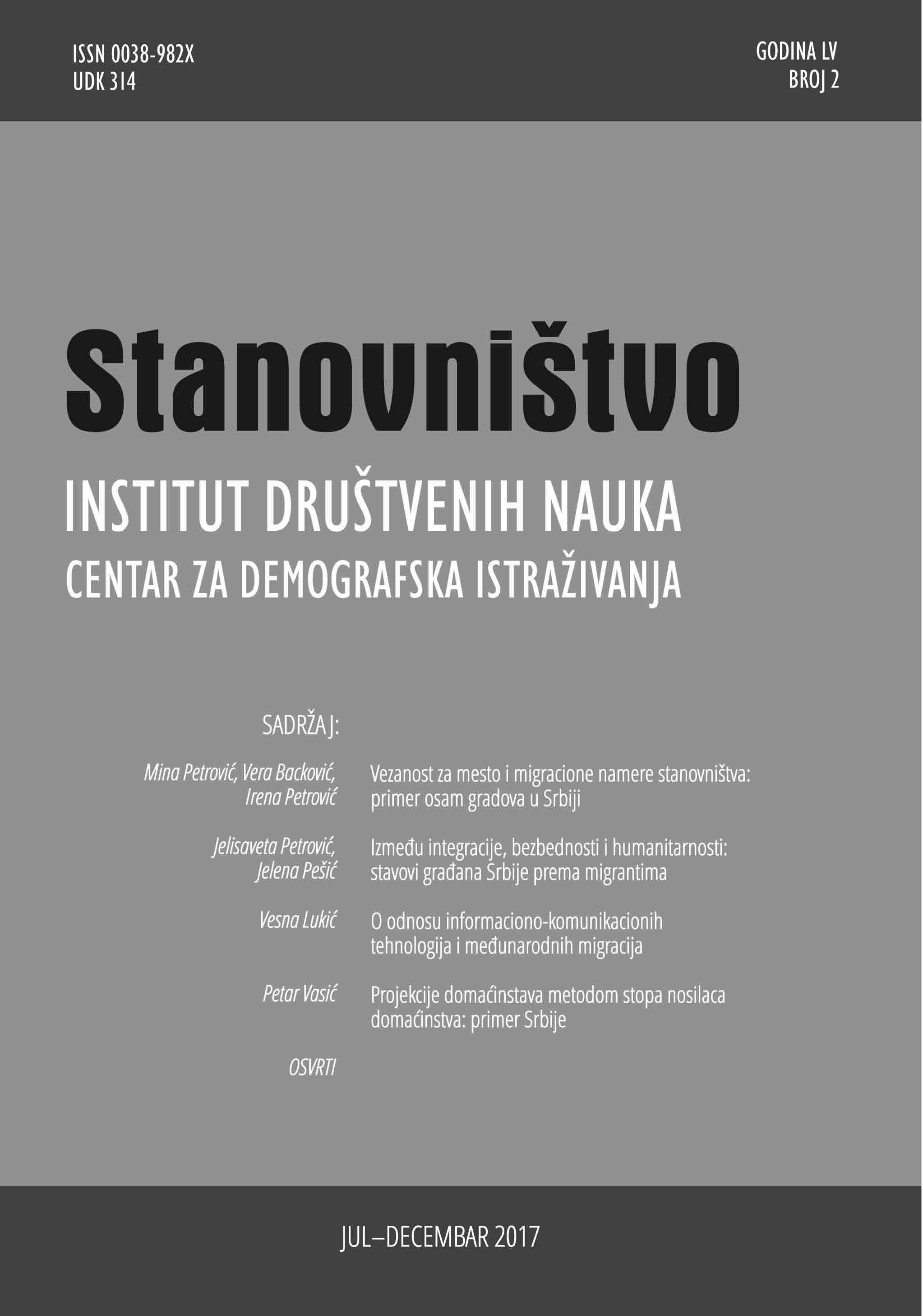Vezanost za mesto i migracione namere stanovništva:
primer osam gradova u Srbiji
Place Attachment and Migration Intentions of the Population: An Example of Eight Cities in Serbia
Author(s): Mina Petrović, Vera Backović, Irena PetrovićSubject(s): Social development, Demography and human biology, Environmental interactions, Migration Studies
Published by: Институт друштвених наука
Keywords: place attachment; migration; city; development; habitus
Summary/Abstract: Following the need to combine macro structural and micro actors’ perspective, this paper conceptually starts from endogenous city development paradigm within which place attachment and intentions to migrate are given specific importance since human resources are perceived of pivotal significance. Such paradigm is related to diversified factors that makes city more or less attractive for local population, thus enhancing their place attachment and involvement or migrational intentions. Focused connection between the place attachment and migration intentions are discussed as neglected in studies of migration, and conceptually supported by the notion of territorial identity and specific reinterpretation of Bourdieu’s ideas of sense of comfort in place, and by employing his concept of habitus to the city. Empirically, the connection of people’s place attachment and intentions to migrate is analyzed for eight cities in Serbia. The selected cities: Kragujevac, Sabac, Užice, Novi Pazar, Sombor, Zrenjanin, Leskovac, and Zaječar are chosen as middle sized cities for which the issues to develop attractiveness and attach their population becomes particularly complex in times of (post-socialist) transformation and economic crisis. Empirical analysis is aimed to illustrate the researched cities potential to keep their population by investigating their place attachment (emotional and func-tional) and the way they perceive their city, in relation to their intention to mi-grate. Data are collected through questionnaire survey, in the 2013-2015 period. Such an explorative aim intended to demonstrate the importance to research local population perspective in order to understand the cities as lived spaces and their acting potential, as such important information are left out of scope by regular statistics. Research findings confirm the basic assumption that cities with higher migration inclinations are also the cities with lower place attachment. That supports the employed perspective which reveals that place attachment and provincial habitus’ characteristics emerge irrespective to their development category. Thus, Zrenjanin and Zajecar appeared with weaker while Novi Pazar with stronger capacities than expected. Besides that, the correlation between migration inclinations and place attachment is more consistent and stronger than between migration inclinations and any other socio-demographic characteristic of respondents, in all cities. Such finding confirms the need that place attachment should be given more attention in researching city development potentials, for which migrations are sifnificant indication. More work should be dedicated to further conceptualization of connection between place attachment and migrational intentions both from demographic and sociological perspective. Also, the fact that respondents’ education correlates more to place attachment than to migrational intentions, while correlations among the last two variables are more consistent, indicates to possible complex interferences and need to further explore the observed connections.
Journal: Stanovništvo
- Issue Year: 55/2017
- Issue No: 2
- Page Range: 1-24
- Page Count: 24
- Language: Serbian

